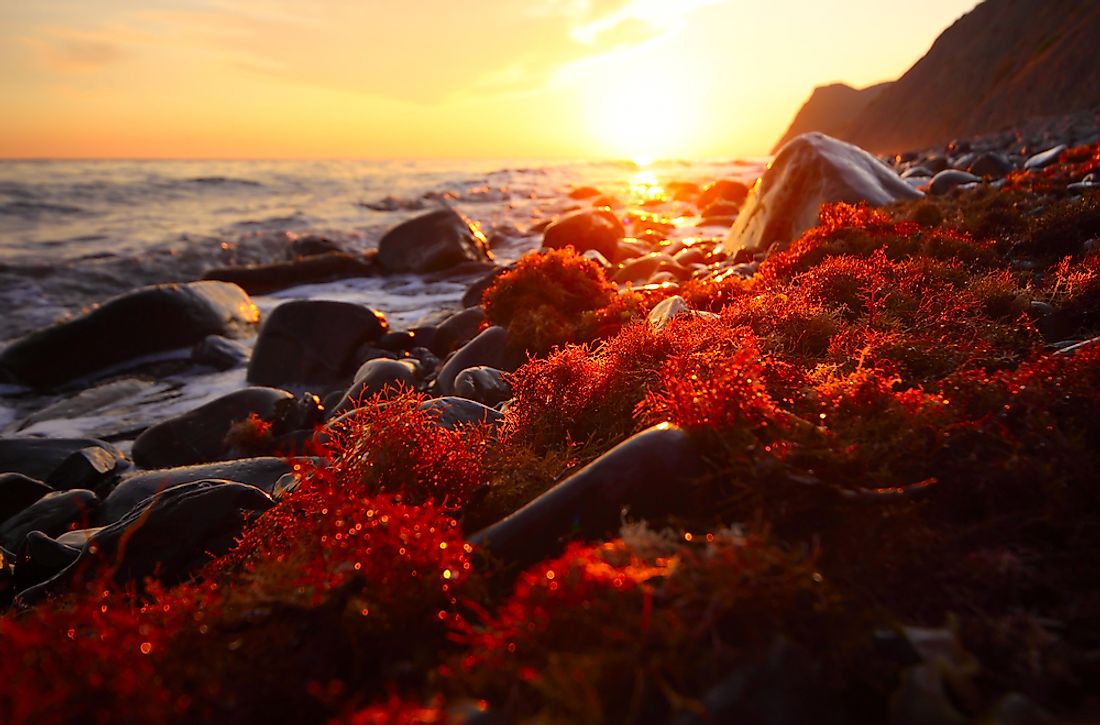The Major Types Of Algae

Algae are simple photosynthetic organisms with plant-like characteristics and mainly found in aquatic environments. Algae are classified under the kingdom Protista. They are classified according to pigmentation and food reserves. They contain chloroplasts which enable them to synthesize their own food through photosynthesis just like plants. Algae can be found in a wide range of environments such as moist soil, salt water, moist rock and fresh water. Good examples of algae include seaweed, giant kelp, and pond scum. These organisms can occur as either single cell organisms or multicellular species for the large ones. There are seven types of algae based on the different types of pigmentation and the food reserves.
Green algae (Chlorophyta)
Green algae are mainly found in aquatic habitats especially freshwater environments. Others can also be found in salt water environments such as the ocean. They contain flagella which enables them to feed on organic matter in their surroundings. Since green algae contain chloroplasts, they can process their own food. They occur as unicellular or multicellular species containing thousands of cells. Examples include horsehair algae and sea lettuce.
Euglenophyta (Euglenoids)
This type of algae contain chloroplasts and can synthesize their own food through the process of photosynthesis. Euglena can be found in fresh and saltwater environments. Unlike other types of algae, they do not have a cell-wall but instead, have a pellicle which is a protein-rich layer. They source their food in their habitats, mainly feeding on unicellular organisms and carbon-rich foods.
Golden-brown algae and Diatoms (Chrysophyta)
The golden-brown algae and diatoms are the most widespread unicellular species of algae. There are about 100,000 species of Chrysophyta found in both fresh and saltwater habitats. Of the two types of Chrysophta, diatoms are the most abundant type and occur in the ocean as the different types of planktons. Golden-brown algae have small cells of only 50 micrometers. In the ocean, they occur as nanoplanktons and normally have a rapid rate of productivity compared to the diatoms.
Fire algae (Pyrrophyta)
Fire algae are unicellular organisms found in salt water environments with some few species found in freshwater environments. They use flagella, for movement in the water. They consist of two different types, namely; cryptomonads and dinoflagellates. Some species of fire algae are bioluminescent and light the ocean at night. They produce neurotoxin which is harmful to humans and other organisms.
Red algae (Rhodophyta)
Red algae are eukaryotic cells that do not contain flagella and centrioles and are mainly found in oceans in the tropical regions. They thrive on solid surfaces such as reefs and may also be found attached to other algae. Rhodophyta contains a cell wall that is made up of cellulose and other types of carbohydrates. Some seaweeds are red algae.
Yellow-green algae (Xanthophyta)
These unicellular organisms are the rarest and least prolific species of algae with only 450 to 650 species. Their cell walls are made of silica and cellulose with only a maximum of two flagella for movement. They appear a lighter green since their chloroplasts lack a certain pigmentation. Yellow-green algae are common in freshwater environments with some few species living in salt water environments.
Brown algae (Paeophyta)
These are among the largest and most complex species of algae. They inhabit marine environments. They contain photosynthesis organs and differentiated tissues. Brown algae have a life cycle which involves the alternation of generations. Main examples of brown algae include giant kelp, rockweed and sargassum weed. Some species can be large enough to be 100 meters in length.











